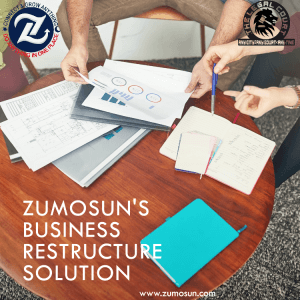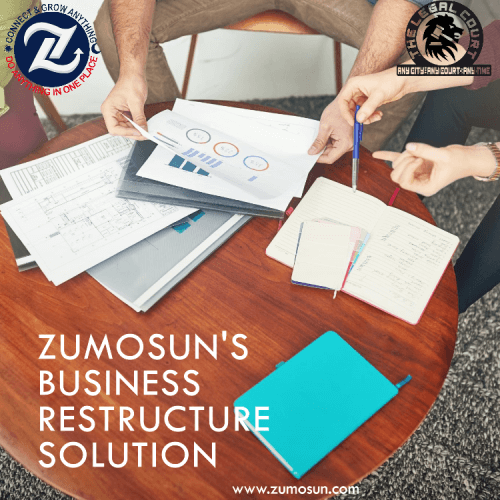Understanding Business Restructuring Strategies
Business restructuring is the process of reorganizing a company's structure, operations, or finances to improve efficiency, address financial challenges, or better align with strategic goals. It involves making significant changes to the way a business is run, including its organizational structure, ownership, or operations. The ultimate goal of restructuring is to enhance the company’s performance, mitigate risks, or prepare it for new opportunities.
Key Aspects of Business Restructuring
-
Financial Restructuring:
- Debt Restructuring: This involves negotiating with creditors to alter the terms of debt, such as extending the repayment period, reducing interest rates, or converting debt to equity. It is often used when a company is facing financial distress and cannot meet its debt obligations.
- Equity Restructuring: This may include issuing new shares, buying back shares, or changing the ownership structure to raise capital or reduce financial risk.
-
Operational Restructuring:
- Cost Reduction: Streamlining operations to cut costs, which could involve downsizing the workforce, reducing overhead, or eliminating non-essential business units.
- Process Improvement: Reengineering business processes to improve efficiency and productivity, often through the adoption of new technologies or practices.
- Divestment of Assets: Selling off non-core assets or business units to focus on the core business, improve liquidity, or pay down debt.
-
Organizational Restructuring:
- Change in Management: Reorganizing the leadership structure, which could involve hiring new executives, merging departments, or changing reporting lines to improve decision-making and accountability.
- Rebranding or Repositioning: Changing the company’s brand identity or market position to better align with customer needs and market conditions.
-
Legal Restructuring:
- Mergers and Acquisitions: Restructuring the business through mergers with or acquisitions of other companies to achieve growth, enter new markets, or gain competitive advantages.
- Bankruptcy Restructuring: In extreme cases, restructuring may involve filing for bankruptcy protection, which allows a company to reorganize its debts and business operations under court supervision.
-
Strategic Restructuring:
- Refocusing on Core Business: Shifting focus to the company’s primary business activities and divesting or closing down unrelated or unprofitable divisions.
- Entering New Markets: Restructuring to enter new geographic markets or product segments, which may involve acquisitions, joint ventures, or strategic partnerships.
Reasons for Business Restructuring
- Financial Distress: Addressing financial difficulties, such as cash flow problems, high debt levels, or declining profitability.
- Growth Opportunities: Preparing for or capitalizing on new opportunities, such as expanding into new markets, launching new products, or acquiring competitors.
- Regulatory Changes: Adapting to changes in laws, regulations, or industry standards that affect the business.
- Competitive Pressure: Responding to increased competition by improving operational efficiency or repositioning in the market.
- Mergers and Acquisitions: Integrating acquired companies or preparing for a merger or acquisition.
Benefits of Business Restructuring
- Improved Financial Health: Reducing debt, improving cash flow, and enhancing profitability.
- Increased Efficiency: Streamlining operations, reducing costs, and improving productivity.
- Enhanced Competitiveness: Better positioning in the market, leading to increased market share and customer satisfaction.
- Better Management: Improved decision-making and accountability through changes in organizational structure.
Challenges of Business Restructuring
- Employee Morale: Restructuring often involves layoffs or changes in roles, which can affect employee morale and productivity.
- Customer Perception: Changes in the company’s operations or branding can impact customer perception and loyalty.
- Implementation Risks: The complexity of restructuring can lead to operational disruptions, legal challenges, or resistance from stakeholders.
Procedure for Business Restructuring
Business restructuring is a strategic process that involves reorganizing a company's structure, operations, or finances to enhance performance, resolve financial issues, or realign with market changes. Below is a detailed procedure for conducting business restructuring:
**1. Assessment & Diagnosis
a. Financial Analysis:
- Examine financial statements: Analyze income statements, balance sheets, and cash flow statements to identify financial weaknesses, such as declining revenue, increasing debt, or insufficient cash flow.
- Conduct a break-even analysis: Determine the point at which the business covers its costs and starts to generate profit.
- Evaluate liquidity and solvency: Assess the company’s ability to meet short-term obligations and long-term liabilities.
b. Operational Analysis:
- Evaluate current operations: Assess the efficiency of business processes, supply chains, and resource allocation.
- Identify inefficiencies: Look for bottlenecks, redundancies, and areas where costs exceed value.
- Review technology and infrastructure: Assess the adequacy of existing technology and infrastructure in supporting business objectives.
c. Market Analysis:
- Analyze market trends: Identify shifts in consumer behavior, industry trends, and competitive pressures.
- Evaluate competitive positioning: Assess the company’s market share, customer base, and competitive advantages or disadvantages.
d. Organizational Analysis:
- Review organizational structure: Evaluate the effectiveness of the current management hierarchy and employee roles.
- Assess talent and leadership: Identify key personnel, leadership strengths, and gaps in skills or experience.
- Analyze company culture: Determine if the current culture aligns with strategic goals and supports change.
**2. Strategic Planning
a. Define Restructuring Objectives:
- Set clear goals: Whether it’s improving financial health, increasing operational efficiency, or entering new markets, define specific objectives for the restructuring.
- Prioritize initiatives: Rank the initiatives based on their potential impact, feasibility, and alignment with long-term goals.
b. Develop a Restructuring Plan:
- Financial Restructuring: Plan actions such as debt restructuring, asset sales, equity infusion, or cost-cutting measures.
- Operational Restructuring: Plan process improvements, technology upgrades, or the consolidation or closure of business units.
- Organizational Restructuring: Plan changes in the organizational hierarchy, workforce reductions, or new management appointments.
c. Risk Assessment:
- Identify risks: Evaluate potential risks associated with restructuring, such as employee resistance, customer churn, or operational disruption.
- Develop contingency plans: Prepare strategies to mitigate identified risks and ensure business continuity during restructuring.
d. Stakeholder Engagement:
- Communicate with stakeholders: Clearly explain the reasons for restructuring and the expected outcomes to employees, investors, customers, and suppliers.
- Gather feedback: Involve key stakeholders in the planning process to address concerns and gain their support.
**3. Implementation
a. Financial Restructuring:
- Debt Restructuring: Negotiate with creditors to modify loan terms, extend repayment periods, or reduce interest rates.
- Equity Restructuring: Issue new shares, buy back existing shares, or attract new investors to improve the capital structure.
- Asset Liquidation: Sell non-core assets or underperforming business units to generate cash and reduce liabilities.
b. Operational Restructuring:
- Cost-Cutting Measures: Implement cost-saving initiatives such as workforce reductions, process automation, or outsourcing.
- Process Reengineering: Redesign business processes to improve efficiency and reduce waste.
- Technology Upgrades: Invest in new technology or systems to enhance productivity and competitiveness.
c. Organizational Restructuring:
- Management Changes: Appoint new leaders, realign reporting structures, or merge departments to improve decision-making and execution.
- Workforce Restructuring: Reassign roles, retrain employees, or implement layoffs where necessary.
- Cultural Transformation: Foster a culture that supports the new strategic direction through communication, training, and leadership development.
**4. Monitoring & Evaluation
a. Track Progress:
- Establish KPIs: Define key performance indicators (KPIs) to measure the success of the restructuring initiatives.
- Regular Reporting: Set up regular reporting mechanisms to track progress against the restructuring plan.
b. Adjust Strategies:
- Review Outcomes: Periodically assess the outcomes of the restructuring efforts to determine if the objectives are being met.
- Make Adjustments: If necessary, adjust strategies or tactics to address any issues or to capitalize on new opportunities.
c. Stakeholder Communication:
- Keep Stakeholders Informed: Maintain ongoing communication with stakeholders to keep them updated on progress and any changes to the restructuring plan.
**5. Sustainability & Growth
a. Embed Changes:
- Institutionalize Best Practices: Ensure that successful changes are embedded in the company’s processes and culture.
- Continuous Improvement: Encourage a culture of continuous improvement to sustain the benefits of restructuring.
b. Focus on Growth:
- Strategic Investments: Reinvest savings from restructuring into growth initiatives such as new product development, market expansion, or digital transformation.
- Innovation: Foster innovation to stay ahead of the competition and continue driving growth.
Call to Action
If your business is considering restructuring to overcome challenges, streamline operations, or prepare for growth, our expert team and resources can help guide you through the process. We offer tailored solutions designed to meet your specific needs and ensure a successful transformation.
Take the First Step:
- Schedule a Consultation: Contact us at 9116098980/9119112929 or email us at info@zumosun to schedule a free initial consultation.
- Visit Our Website: Learn more about our restructuring services and success stories by visiting www.zumosun.com
- Download Our Guide: Get a free guide on business restructuring by signing up for our newsletter at zumosun
Transform your business for a stronger future. Reach out today and let us help you navigate your restructuring journey!
No reviews found.











No comments found for this product. Be the first to comment!